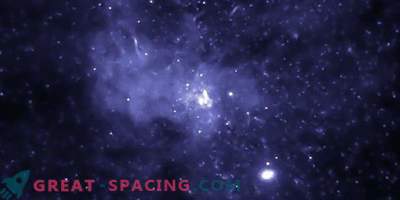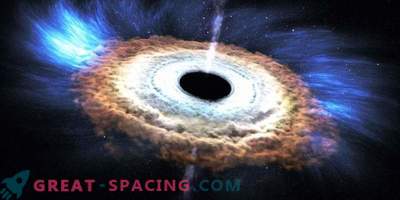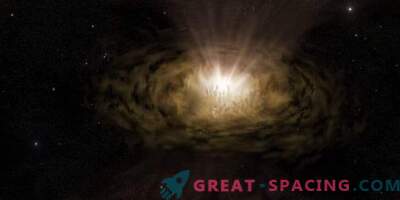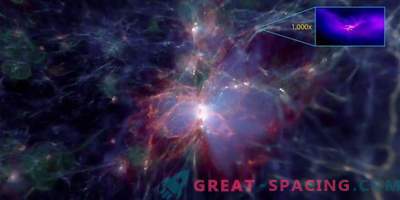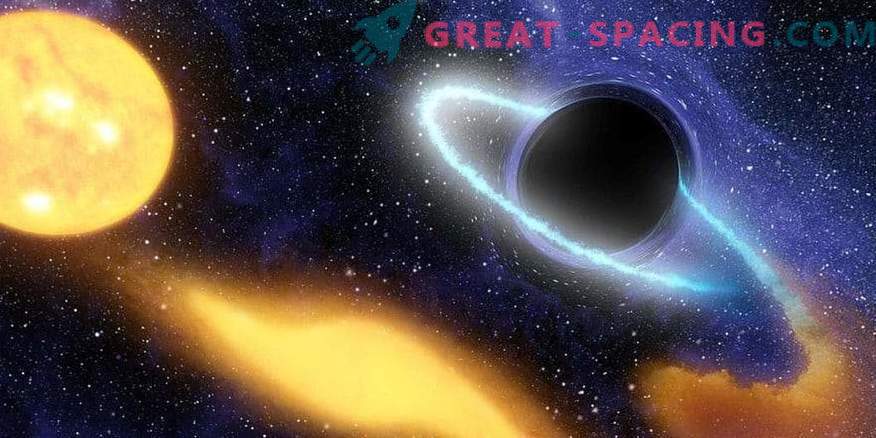
Artistic vision of a supermassive black hole in the galactic center. Blue - radiation from a material close to a hole, gray - a torus around a black hole, represented by gas and dust
A black hole of stellar mass is a compact object whose mass reaches more than three solar. It is so dense and endowed with such a powerful force of attraction that even the light cannot escape. Such black holes cannot be observed directly, but secondary effects can be recorded, for example, during feeding. When matter falls into a black hole, it creates an “echo” on the accretion disk. However, there are periods of strong bursts with powerful flashes of X-ray brightness.
Binary systems (a star that feeds a black hole) are necessary laboratories for understanding the most extreme physical phenomena in the Universe, like the collapse of massive stars into a black hole or a neutron star. So far, we have managed to find about 60 candidates for the black hole type of stellar mass in the Milky Way, where only 17 have confirmed. Problems are associated with difficulties in studying the motion of a star-satellite around a black hole (this is how mass and type of object is determined).
Researchers have a somewhat limited understanding of the formation and evolution of a particular type of black hole due to a small sample. Therefore, it is important to find new strategies to search for a hidden population of objects that are not in the active phase and do not emit X-rays. This was taken up by a group of astronomers who tested a new method for measuring the brightness of binary systems using a combination of filters centered on the hydrogen line H-alpha. The measurements provide information about the intensity and width of this line, which is formed in the accretion disk around the black hole. For example, the width H-alpha can be used as an indicator of the strength of the gravitational field, so we get a diagnosis of the presence of a black hole. Thus, it will turn out to reveal new black holes in the sleeping phase.
To demonstrate the benefits of technology, scientists observed four systems with confirmed black holes, using a set of special filters on the ACAM 4.2-meter telescope by William Herschel. The data were then compared with direct measurements of the width of the H-alpha line obtained by the ISIS spectrograph at the Large Canary Telescope. The result confirmed the practicality of applying the new method using photometric strategies. Calculations showed that analysis of about 1000 square degrees (10%) of the galactic plane zone will allow finding at least 50 new objects of such black holes.



